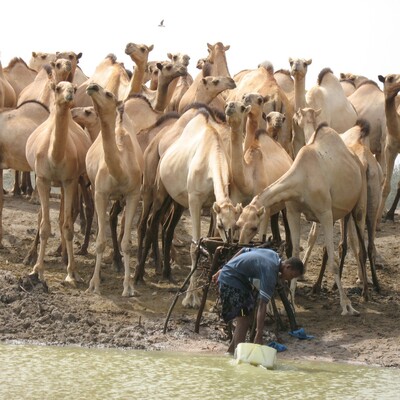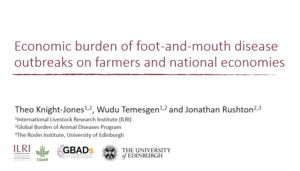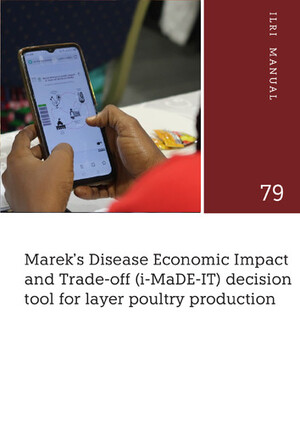
Risk factors for severe Rift Valley Fever infection in Kenya, 2007
Abstract
A large Rift Valley fever (RVF) outbreak occurred in Kenya from December 2006 to March 2007. We conducted a study to define risk factors associated with infection and severe disease. A total of 861 individuals from 424 households were enrolled. Two hundred and two participants (23%) had serologic evidence of acute RVF infection. Of these, 52 (26%) had severe RVF disease characterized by hemorrhagic manifestations or death. Independent risk factors for acute RVF infection were consuming or handling products from sick animals (odds ratio [OR] = 2.53, 95% confidence interval [CI] = 1.78–3.61, population attributable risk percentage [PAR%] = 19%) and being a herdsperson (OR 1.77, 95% CI = 1.20–2.63, PAR% = 11%). Touching an aborted animal fetus was associated with severe RVF disease (OR = 3.83, 95% CI = 1.68–9.07, PAR% = 14%). Consuming or handling products from sick animals was associated with death (OR = 3.67, 95% CI = 1.07–12.64, PAR% = 47%). Exposures related to animal contact were associated with acute RVF infection, whereas exposures to mosquitoes were not independent risk factors.
Citation
Anyangu, A.S.., Gould, L.H., Sharif, S.K., Nguku, P.M., Omolo, J.O., Mutonga, D., Rao, C.Y., Lederman, E.R., Schnabel, D., Paweska, J.T., Katz, M., Hightower, A., Njenga, M.K., Feikin, D.R. and Breiman, R.F. 2010. Risk factors for severe Rift Valley Fever infection in Kenya, 2007. American Journal of Tropical Medicine and Hygiene 83(2 Suppl):14-21.










